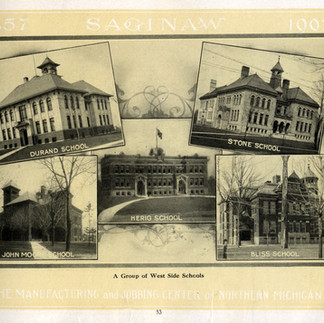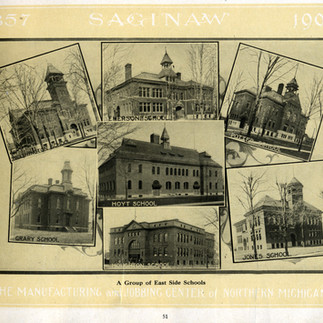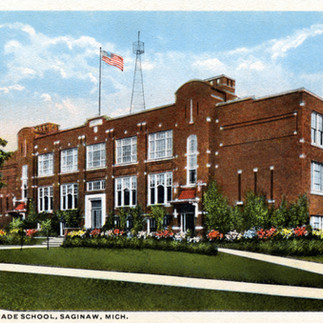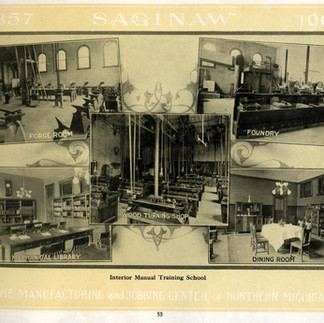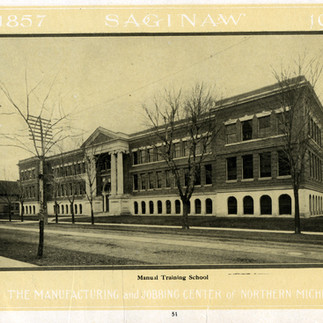
“Let all differences between the people of the two Saginaw’s on the question of consolidation be now laid away, never again to be brought up for discussion. We are now about to be made one common people, a unified community, and we cannot afford to lose one vestige of prestige by further bickering. The fight for and against the union was stubbornly contested on one side and skillfully manipulated on the other, and the Legislature conceded to the latter, and if Gov. Luce does not veto the bill, which he hardly has the temerity to do, the first day of April, 1890, will find the city of Saginaw awaiting the coming a few weeks later of the census takers to record a population of over 60,000,” The Saginaw Evening News, June 26 ,1889.
On June 28, 1889, Governor Cyrus Luce signed Local Act 455 consolidating East Saginaw and Saginaw City, and in March 1890, the two communities became one city. The legislation carefully outlined details of the merger that included the construction of a new city hall located halfway between the two business districts and construction of additional bridges to join the communities. However, items remained to be negotiated over time. Perhaps largest item was the consolidation of the school boards. A 1907 publication stated it simply: “Saginaw has two public school systems, one for each side of the river.”
While the separate cities of East Saginaw and Saginaw City no longer existed, their school districts remained intact. The names were simply adjusted to reflect the side of the river on which they were located: the east side was served by the Board of Education of the City of Saginaw, East Side and the west side by the Union School District of the City of Saginaw. In 1907, the east side district served 4,944 students and the west side 3,200 pupils. The duplication was obvious.
Competition was not limited to students and athletic events. Saginaw’s philanthropic activities reflected and reinforced the division. Heavenrich Bros. & Co. established a scholarship for students of Saginaw High School in 1891. Two years later lumberman Arthur Hill established scholarships for the former Saginaw City High School - it was renamed in his honor. In 1905, the Burt Manual Training School was dedicated. This addition to the Saginaw High campus, was made possible by a $235,000 gift from Wellington R. Burt. Six years later, with a bequest from Arthur Hill, construction started on Arthur Hill Trade School to serve the west side schools.
Finally, a merger of the two districts was put before the voters. On October 22, 1925, the headline of the Saginaw News Courier announced, “West Sides votes 582 to 298 and East Side 442 to 301 for Consolidating Districts.” The paper also noted: “only 1,623 votes being cast, representing the smallest number of voters to participate in deciding a citywide question since the earliest days.”
While the general public did not seem particularly engaged in the mechanics of the merger, members of the former boards quickly disagreed. Soon, the disagreement escalated into a complicated legal challenge, and the legitimacy of the election was called into question. The Michigan Attorney General and the Michigan Supreme Court were brought into the argument. The Supreme Court upheld the results and stated: “The will of the votes ought not to be thwarted except for grave and substantial reasons.” The court also called for an election to be held as soon as possible. An editorial in the January 15, 1926, Saginaw News Courier, proclaimed:
“The consolidation that the people voted on last fall is to become a fact and those who are moved only by thoughts for the best interests of a thoroughly unified Saginaw cannot but rejoice.”
On February 8, 1926, Saginaw voters went to the polls to choose a new school board. The paper reported that the new board was composed of “two members of each of the old school boards, besides a former member of each of the former boards, [and] a newcomer in school affairs.”
This post is in collaboration with the Saginaw Community Foundation to highlight education and scholarship history in Saginaw. You can read the first installment, Saginaw Community Foundation Scholarships: A History, and watch for more installments in this series.




